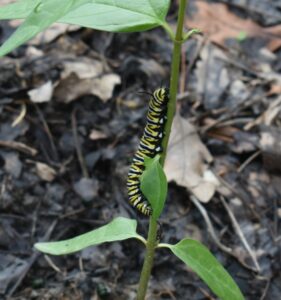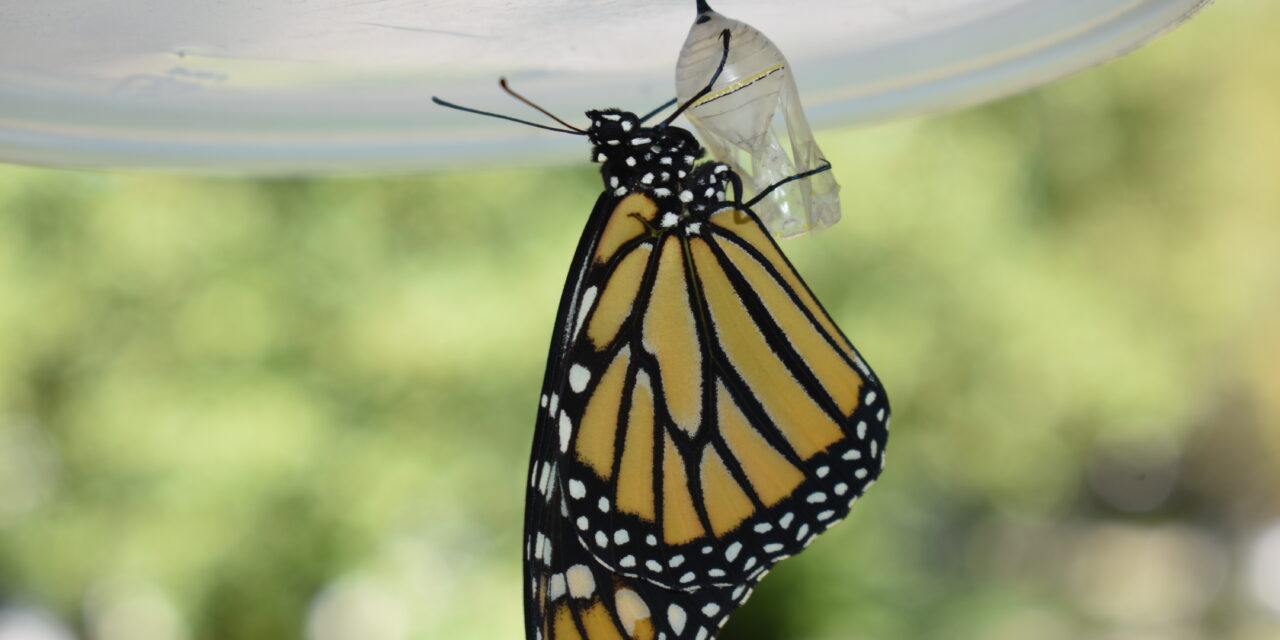When the monarch butterfly was placed on the endangered species list earlier this year, a spokeswoman for a butterfly monitoring group said people can help stem the decline in monarchs by planting milkweeds.
A local master gardener led off a column with “If you plant them (milkweeds), they (monarchs) will come.”
That advice is much too simplistic, said Steve Shull of Brookfield, a trained horticulturist.
Shull has turned over sections of his property to stands of vegetation that attracts pollinators, including bees and butterflies, and his experience with milkweed and monarchs has been anything but simplistic.
“There’s a big gap between what you read and what happens,” said Shull, who has taken caterpillars into Brookfield Elementary School so students can watch them grow and metamorphose into butterflies.
Planting milkweed seeds requires a level of patience and attention to detail that only the hardiest gardeners can manage. You have to refrigerate them for a month, somehow managing to leave them be while you look for the milk or the leftover spaghetti.
“The seeds are a pain in the (expletive) to germinate,” he said.
Shull said he has had much better outcomes transplanting milkweed plants that sprout in ditches or the edges of woodlands around town.

You also have to consider what kind of milkweed plants you want to plant, and there are several. What is known as common milkweed is what most people know as milkweed, with its long, broad, sturdy, down-drooping leaves. But there are other varieties that most people would not recognize as milkweed. Shull grows common milkweed; tropical milkweed, which has pointier, thinner leaves; and swamp milkweed, which has leaves somewhere between the two.
“Common milkweed is your most common milkweed species in Ohio, but that tropical milkweed has real tender leaves and somehow or other the monarch females realize that,” he said. “That’s their preferred egg-laying species.”
When it comes to attracting caterpillars, “The swamp milkweed comes in second and the common milkweed is barely in the running,” Shull said.
Monarch caterpillars are known by their yellow, black and white stripes, but they don’t necessarily sit out in the open for you to see them, Shull said.
“When you’re looking for caterpillars, I kneel down and look up at the (underside of the) leaves,” he said.
Also look for caterpillar poop, which they tend to leave on the leaves. If you see signs that milkweed leaves have been eaten, don’t assume it’s by monarch caterpillars. Eight common to Ohio insects feed on milkweed leaves, including the milkweed aphid, Shull said.
He has noticed that the butterflies seem to like areas that are in woods or dense brush, and swampy. “Those are the types of areas they can fly in well.”
Shull said he can’t say if he has seen a dropoff in the monarch population, because he’s only been trying to attract them for a few years.
“I want to get a better handle on the environment that they like,” he said.
That’s good advice to any backyard gardener. If you’re interested in growing a milkweed or a pollinator garden, don’t get too wrapped up in what the experts say, Shull said. Observe how nature works in your area, what plants grow naturally, and what insects are attracted to them, and experiment.
“You learn as you go,” he said. “You go and see what Mother Nature does, and you follow suit.”










